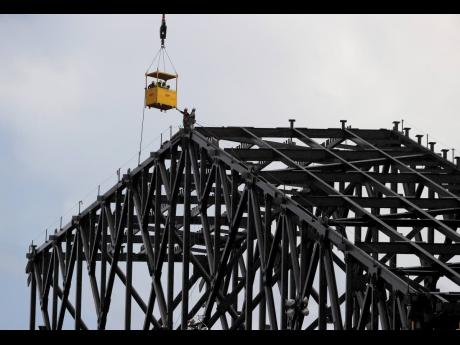US economy grew at modest 2% pace in second quarter
The United States economy grew at a modest two per cent annual rate in the second quarter, a pace sharply lower than the three per cent-plus growth rates seen over the past year.
Many analysts believe that growth will slow further in coming quarters as global weakness and rising trade tensions exert a toll.
The April-June increase in the gross domestic product, GDP, the economy’s total output of goods and services, slipped from a brisk 3.1 per cent gain in the first quarter, the US Commerce Department reported last Thursday.
The government’s third and final look at second-quarter GDP growth was the same as the previous estimate, although the components were slightly altered. Consumer spending and business investment rose at slower rates than previously estimated, but this was offset by slightly stronger gains in government spending and exports.
In the current quarter, analysts believe GDP is likely growing at the same modest two per cent rate, and they are forecasting a similar outcome in the final quarter.
For the year, GDP is expected to rise around 2.2 per cent, down from the strong 2.9 per cent gain seen last year, which had been the best performance since 2015.
After a spurt in growth last year due to the Trump administration’s US$1.5-trillion tax-cut programme, growth has slowed noticeably to slightly below the 2.2 per cent annual growth rates turned in during the current economic expansion.
While the economic recovery from the Great Recession is now in its 11th year, the longest in US history, it has been the slowest in terms of annual growth rates, a fact economists attribute to slower growth in the labour market owing to the retirement of baby boomers and a slowdown in productivity.
Trump, however, repeatedly attacked Obama-administration economic policies for the lacklustre GDP rates and pledged to achieve annual growth above three per cent with his economic programme of big tax cuts, deregulation, and tougher enforcement of trade laws.
The economy has achieved four quarters of three per cent-plus GDP rates since Trump took office in early 2017, but economists doubt that this pace can be achieved on a sustained basis, given the labour force and productivity issues facing the country.
This year’s expected slowdown has been attributed to a fading of the impact of the Trump tax cuts, as well as adverse effects of Trump’s trade war with China.
Mark Zandi, chief economist at Moody’s Analytics, said that if Trump carries through with an escalation of the tariffs next month and in December, it could be enough to push the country into a recession next year.
“It all hinges on the president and what he decides to do with trade,” Zandi said. “If he follows through on the tariff threats later this year, then in all likelihood, growth will slow and we would end up in a recession next year.”
Zandi is forecasting that GDP growth this year will slow to 2.3 per cent and then slow further to 1.6 per cent next year, but that is based on no escalation in the trade war with China.
The GDP report showed that consumer spending, which accounts for 70 per cent of economic activity, came in at a sizzling rate of 4.6 per cent, the best quarterly performance since late 2014 but down slightly from last month’s estimate of a 4.7 per cent rate of gain for consumer spending.
Spending by the federal government and state and local governments increased at a 4.8 per cent rate in the spring, up from last month’s estimate of a 4.5 per cent gain.
AP

